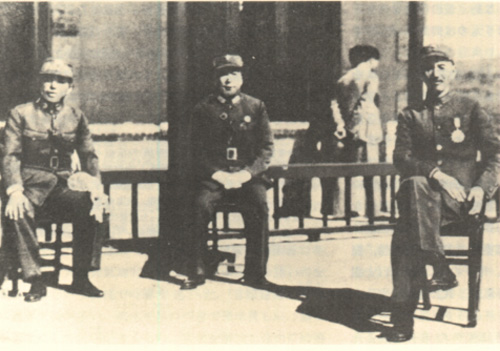Just what timescale are you proposing here? Here is a map of Japanese expansion in China.

Note that the moves in southern China start in 1937 and were designed to cut China off from receiving foreign support from outside, principally the USA. The objective was to enforce a blockade to stop vital war supplies reaching the Chinese. When that didn't work, invasion to seize key ports.
1937 - Canton region. From Nov 1937 blockade, followed by occupation in Oct-Dec 1938.
1938 - May. Occupation of Amoy
1939 - Feb. Hainan Island. Also to provide air bases to bomb targets in southern China
1940 - Northern French Indochina. Again to cut off supplies via Haiphong and leaving only the Burma Road route from Rangoon, up the Irrawaddy River and across the mountains.
Politically, one important date was 26 July 1939 and the US abrogation of the US Japan Treaty of Commerce and Navigation of 1911 as a protest at Japanese actions in China to that point. It took effect 6 months later. It is all downhill after that. This report has a timetable for moves in 1939.
So you are asking Japan to change its entire China strategy from the time that it was suffering defeat at the hands of the USSR during the Nomonhan Incident in May-Sept 1939. Changing that strategy makes China stronger, militarily if not politically. Japan then potentially has to deploy more troops in China.
Note that the moves in southern China start in 1937 and were designed to cut China off from receiving foreign support from outside, principally the USA. The objective was to enforce a blockade to stop vital war supplies reaching the Chinese. When that didn't work, invasion to seize key ports.
1937 - Canton region. From Nov 1937 blockade, followed by occupation in Oct-Dec 1938.
1938 - May. Occupation of Amoy
1939 - Feb. Hainan Island. Also to provide air bases to bomb targets in southern China
1940 - Northern French Indochina. Again to cut off supplies via Haiphong and leaving only the Burma Road route from Rangoon, up the Irrawaddy River and across the mountains.
Politically, one important date was 26 July 1939 and the US abrogation of the US Japan Treaty of Commerce and Navigation of 1911 as a protest at Japanese actions in China to that point. It took effect 6 months later. It is all downhill after that. This report has a timetable for moves in 1939.
So you are asking Japan to change its entire China strategy from the time that it was suffering defeat at the hands of the USSR during the Nomonhan Incident in May-Sept 1939. Changing that strategy makes China stronger, militarily if not politically. Japan then potentially has to deploy more troops in China.

